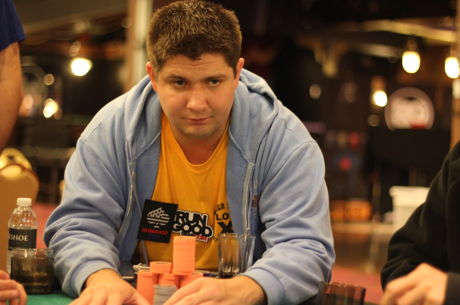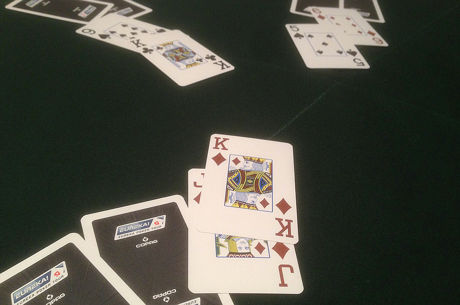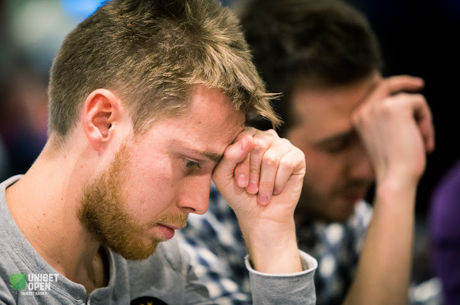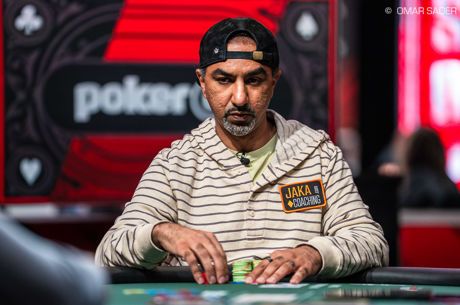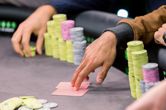Hand Analysis: An Excerpt from ��Thinking Tournament Poker, Vol. 2�� by Nate Meyvis
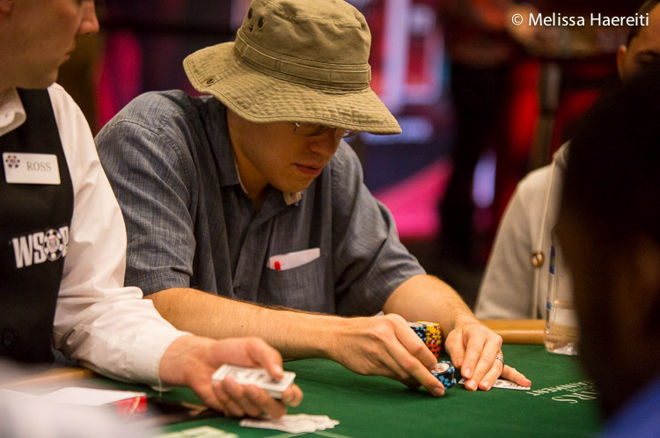
Nate Meyvis has returned with a second volume in his Thinking Tournament Poker series, this time presenting in detail hands played during Day 2 of his 2014 World Series of Poker Main Event run.

Readers of PokerNews are familiar with Meyvis��s perceptive strategy articles. Many also likely know of the long-running podcast Thinking Poker he co-hosts with Andrew Brokos who has also shared numerous helpful insights here at PokerNews Strategy.
In addition to interviewing interesting figures from the poker world, the pair often discuss strategy on the podcast, and it was those discussions that helped provide the inspiration for the Thinking Tournament Poker series. Meyvis has experienced success in the WSOP Main Event before, making it inside the top 100 finishers in 2011 and getting back to cash again in the tournament last year.
The second volume covers all five levels of Day 2 of the 2014 WSOP Main, with even more hands discussed than in the previous volume where Meyvis focused on Day 1. Table conditions Meyvis experienced on Day 2 led to his getting involved more often, including going for more preflop steals along the way. Once again Meyvis has called upon his Thinking Poker co-host Brokos, Leo Wolpert, and Gareth Chantler to help provide detailed analyses of his play in the hands he is presenting.
Here��s an excerpt from the book describing a hand occurring early in Level 7 (blinds 300/600, ante 75) with Meyvis��s analysis as well as thoughts from both Wolpert and Chantler. By this point Meyvis has built his stack up to 64,000, just over twice the 30K with which he began the tournament.
Hand 57: 64k
?
I raised to 1,200 from middle position with A?J?. The four-seat, who was a new player to the table, called next to act, and the seven-seat defended the big blind.
?
Flop (4,300): Q?Q?3?.
?
The big blind led out for 1,400. I called, getting over 4-to-1 on my money with position, overcards to many pairs he could have, and a possibility of having the best hand. The four-seat complicated the situation by calling also.
?
In Leo's experience, people aren't tooling out in these spots with stuff like KxJx-suited, Jx10x-suited, or 5x4x-suited into two people. That is because the queen is too likely to be one of the other four cards out there. If either one has a queen, I am drawing nearly dead, and I am also losing to a hand like Ax3x.
These considerations favor a fold, but Leo also notes that this might be a situation where raising not only gets better hands to fold but also produces useful information when I'm called. That said, here bluffing is only useful if both opponents fold, because if I only get one person to fold, that equity just flows to the person who has a queen or better. Moreover, calling is better than raising, because it yields similar informational benefits and is cheaper. (For example, we might find a useful bluffing spot if the third player folds and the flop bettor checks the turn.)
?
Although there are arguments for several different approaches, Leo favors a fold, simply because it's hard to have as much as 20% equity and to realize that equity.
?
Turn (8,500): Q?Q?3?8?.
?
The big blind continued for 3,300. Folding is the standard play here, but I chose to call, for a few reasons:
- I thought that the call showed strength and would fold out any hand worse than a queen behind me.
- I thought that the big blind was likely to hold a small or medium pair that I could bluff out on the river.
- I thought that an ace or a jack would give me the best hand occasionally.
?
The four-seat spoiled this plan by calling again. Moreover, this is a bad plan in the first place; Leo characterizes it as ��way, way, way too optimistic.�� Most importantly, it is simply not that hard for one or the other player to have a queen. Also importantly, it is pretty hard for the big blind to keep betting here either if he is bluffing or if he has a marginal made hand.
?
When the four-seat called the turn, I put him on a queen and abandoned my plan.
?
River (18,400): Q?Q?3?8?A?.
?
The big blind now checked. Hitting my hand didn't change my read on the four-seat, so I checked expecting to lose the pot. The four-seat bet 7,000, the big blind called, and I folded. The four-seat showed a queen and the big blind mucked.
?
At the time, I thought it was important that the four-seat was, in my view, likely to fold a hand like 9x9x or 7x7x, which I thought was rather likely for him given the preflop and flop action. Gareth agrees that I would probably fold out these hands by calling the turn, but he disagrees that it's important to the hand. He agrees that the play is too fancy.
?
Again, I agree with my co-authors that the turn call is bad, partly because the big blind probably called the river without a queen. That said, if queens were unlikely a priori for the four-seat given the preflop action, and if the seven-seat were the sort of player who is unlikely to lead out on the flop with a queen, then it is easy to see why I considered this to be a pot worth trying to take away and a pot where I could get a lot of information by calling twice.
?
One lesson here is that even when a pot appears ��available,�� it is dangerous to rely on a parlay. In this case, I needed neither opponent to hold a queen and probably for one of the two players to make a reasonable, but trusting, fold. When your hand has little or no equity against a ��someone has it�� range, it's hard to call a significant bet.
The Kindle edition of Thinking Tournament Poker, Volume 2 by Nate Meyvis is now available on Amazon. Be sure also to check out Nate and Andrew Brokos on the Thinking Poker podcast, and for more from Nate visit his blog at natemeyvis.com.
Want to stay atop all the latest in the poker world? If so, make sure to get PokerNews updates on your social media outlets. Follow us on Twitter and find us on both Facebook and Google+!


